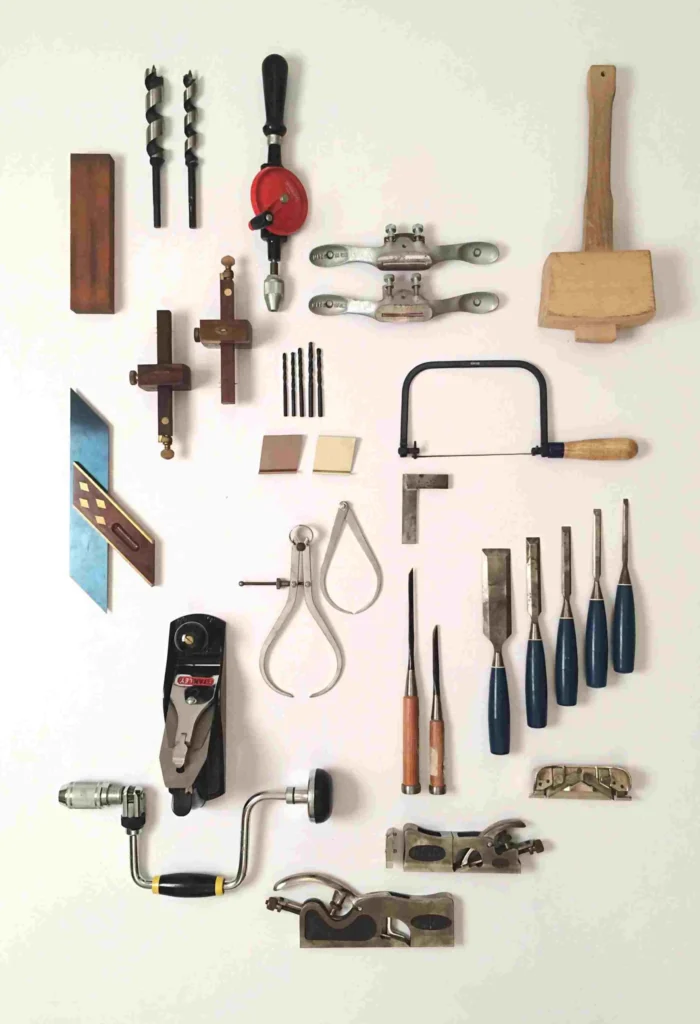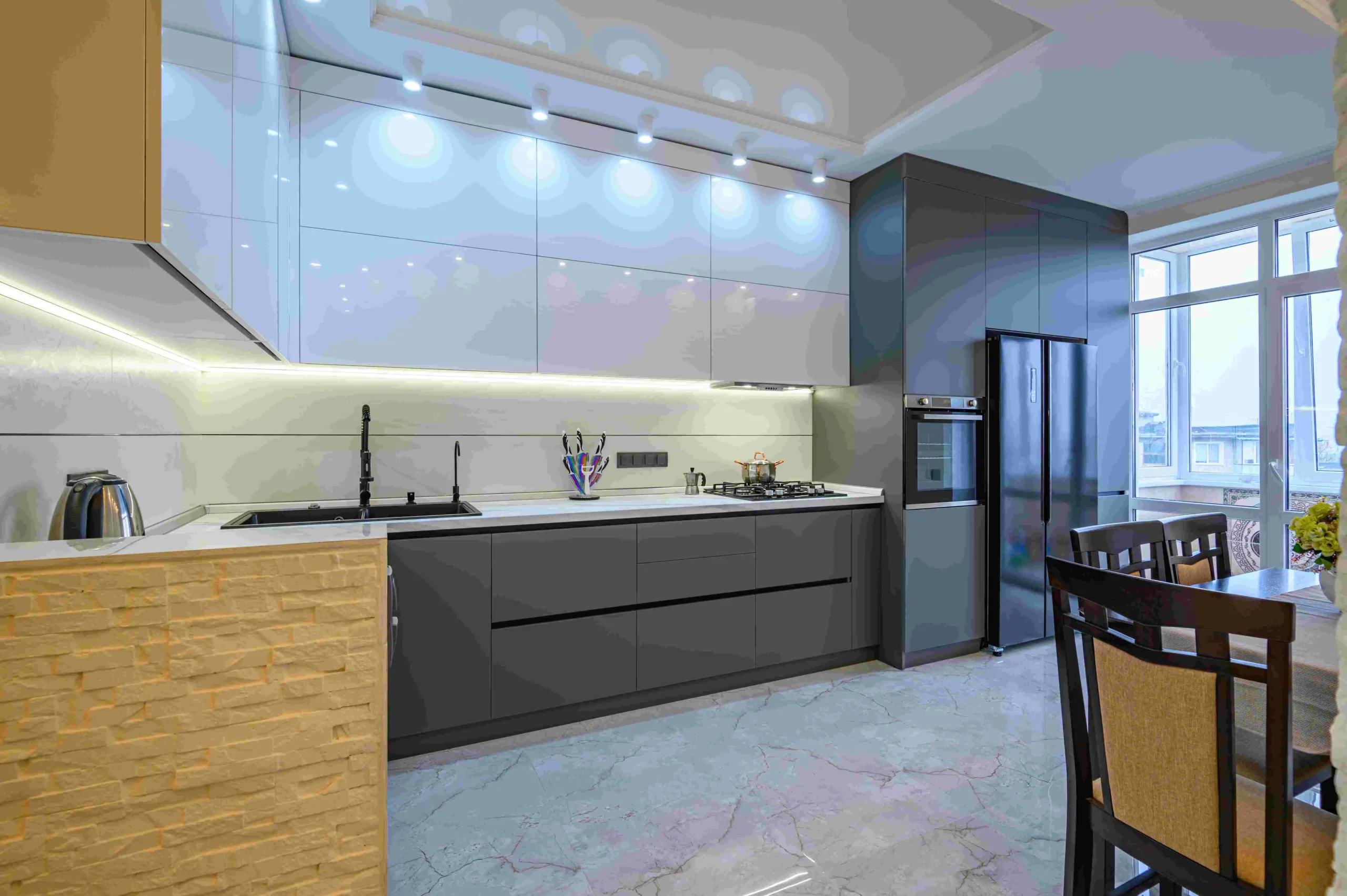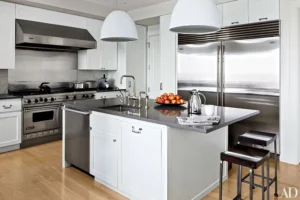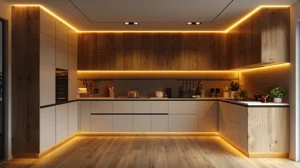Introduction
Want to know the easiest way to learn how to install kitchen cabinets without hiring expensive installers?
Many homeowners feel nervous about hanging cabinets, but it’s actually easier than it seems.
With the right tools, some preparation, and clear steps, you can take on your own kitchen renovation. We’ll walk you through everything, from measuring and marking to leveling cabinets and navigating challenging areas, such as older homes or heavy countertops.
By the end, you’ll know how to avoid common mistakes, save on labor costs, and get a great-looking result.
Let’s get started with this complete guide to installing kitchen cabinets.
Table of Contents
Preparing Your Space Before Installation
Begin by removing the old cabinets, inspecting the wall framing, and marking the studs. If your home is older, add moisture-resistant plywood or a backer board to strengthen weak or uneven walls.
A clean, level base helps your cabinets fit well, support heavy countertops, and stay secure.
Tools You’ll Need for Cabinet Installation
You’ll need a stud finder, drill, level, clamps, shims, tape measure, pocket screws, cleat support, and safety gear, such as gloves and goggles.
The right tools make the job easier and help you avoid mistakes. If you’re new to DIY, a cabinet installation kit can also be helpful.

Measuring and Marking the Layout
Draw a level line for your base cabinets and another for the uppers, usually 18 inches above the countertop. A chalk line helps keep things straight.
Careful measuring keeps cabinets from sagging or leaving gaps. Double-check the space around outlets, plumbing, and appliances.
How to Install Kitchen Cabinets Step by Step
- Start with the upper cabinets to avoid working over base units.
- Attach a ledger board to temporarily support cabinet boxes.
- Secure the cabinets to the studs using wood screws or cabinet mounting screws.
- Shim gaps for a tight, level fit.
- Connect adjacent cabinets through their face frames or side panels.
This method is applicable to both stock and frameless cabinets.
Leveling and Securing Base Cabinets
Base cabinets support your countertops, so ensuring they are level is crucial. Set them on your layout line, use shims if needed, and check that they’re straight in every direction.
Attach them to the studs and to each other. In older homes, use a plywood backer to strengthen weak walls.

Mounting Upper Wall Cabinets Safely
For heavy wall cabinets, use braces or a cleat for support. Always screw into the studs and connect the cabinets to each other for extra strength.
If you have tall ceilings or plan to store heavy dishes, consider adding more fasteners to prevent cabinets from sagging.
Installing Cabinets in Small Kitchens or Older Homes
In small kitchens, careful measuring is even more important. Use thin shims for tight spaces and consider frameless cabinets to maximize room space.
In older homes, walls might be uneven, so leveling and adding plywood helps keep cabinets steady over time.
Adding Finishing Touches: Trim, Hardware, and Soft-Close Features
Finish your project with crown moulding, light rails, toe kicks, and trim. Add handles, knobs, or pulls to make cabinets easy to use and stylish.
Soft-close hinges and drawers help prevent slamming and extend the life of your cabinets.
Common Mistakes to Avoid When Installing Cabinets
- Skipping stud checks before mounting
- Ignoring shims or uneven walls
- Tightening screws before leveling
- Forgetting countertop overhang clearance
- Using weak fasteners instead of cabinet-grade screws
Steering clear of these mistakes helps you get a professional look and cabinets that last.
Conclusion
Installing kitchen cabinets may feel overwhelming at first, but with proper preparation, careful measurement, and clear steps, anyone can achieve a great-looking kitchen.
Whether your space is small, older, or you’re adding new features, these tips will help you succeed.
FAQs About How to Install Kitchen Cabinets
Q1. How long does it take to install kitchen cabinets?
DIY installation typically takes 1–3 days, depending on the size of the kitchen and the skill level.
Q2. Can beginners install kitchen cabinets?
Yes, with clear instructions, patience, and the right tools, even beginners can install stock or semi-custom cabinets.
Q3. How much does it cost to install kitchen cabinets yourself?
DIY can save $1,500–$3,000 in labor costs compared to hiring professionals.
Q4. Do I install base or wall cabinets first?
Always start with wall cabinets so you’re not reaching over the base cabinets.
Q5. How do I install kitchen cabinets around plumbing or outlets?
Cut openings with a jigsaw, then reinforce around the cut areas with trim or fillers.



